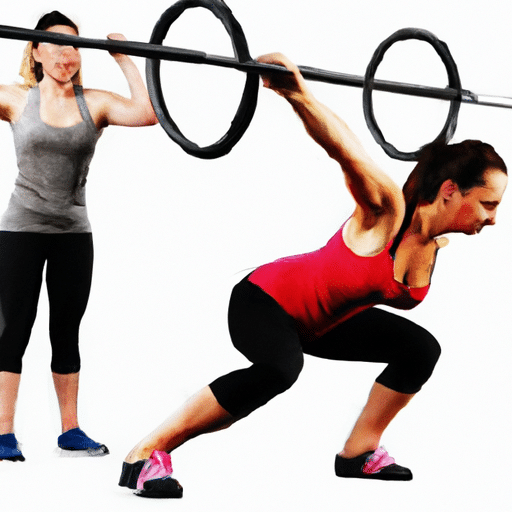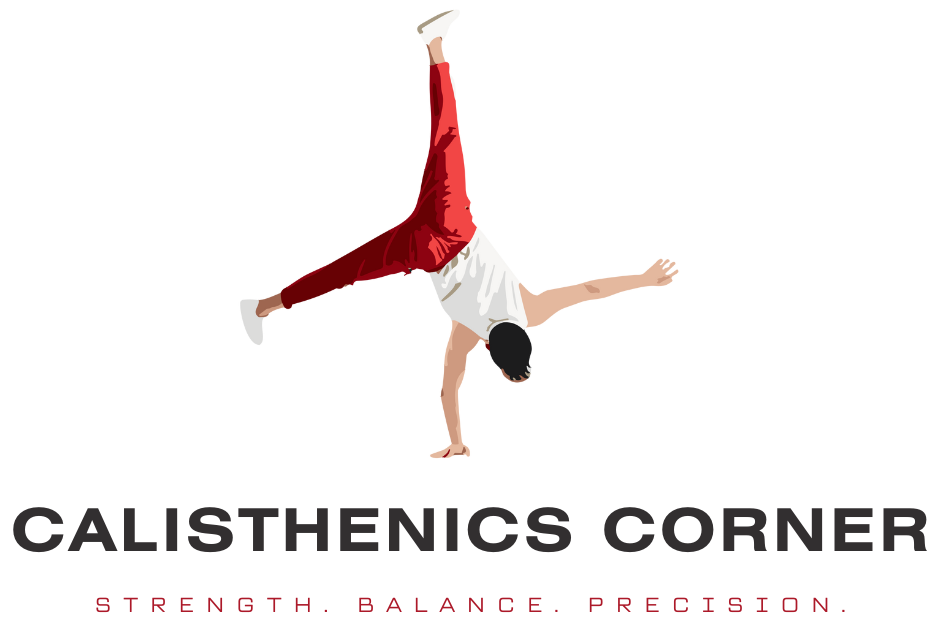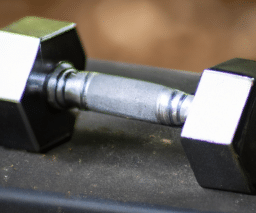You’ve probably heard of CrossFit, the popular fitness program that focuses on high-intensity, functional movements. But have you ever wondered if CrossFit is just another form of calisthenics? In this article, we will explore the relationship between CrossFit and calisthenics, and uncover the similarities and differences between these two types of exercise. Whether you’re a fitness enthusiast or simply curious about these workout styles, you’ll gain insight into the world of CrossFit and calisthenics and discover how they can benefit your fitness journey.
What is Calisthenics?
Definition of Calisthenics
Calisthenics refers to a form of exercise that utilizes bodyweight movements and minimal equipment to build strength, flexibility, and endurance. The word “calisthenics” itself is derived from the Greek words “kalos” meaning beauty, and “sthenos” meaning strength. It involves performing a variety of exercises such as push-ups, squats, lunges, planks, and pull-ups, among others, without the need for external weights or machines. The main focus of calisthenics is to develop functional fitness using your own body weight as resistance.
Benefits of Calisthenics
Calisthenics offers numerous benefits for individuals of all fitness levels and ages. One of the primary advantages is that it can be done anywhere, without the need for a gym or specialized equipment. This makes it a convenient and cost-effective form of exercise. Additionally, calisthenics helps improve overall strength, endurance, and flexibility, as the exercises engage multiple muscle groups and require coordination and control. It also enhances body awareness and proprioception, which can contribute to better balance and stability.
Calisthenics is highly adaptable, allowing individuals to tailor their workouts to their specific goals and fitness levels. It can be modified to accommodate beginners who are just starting their fitness journey, as well as advanced athletes looking to challenge themselves further. Moreover, calisthenics promotes functional fitness by simulating movements that are commonly encountered in everyday life, making it a practical and functional form of exercise.
Examples of Calisthenics
There is a wide range of calisthenics exercises that target different muscle groups and fitness components. Some common examples include:
- Push-ups: This exercise primarily targets the chest, shoulders, and triceps, and can be performed in various variations such as wide-grip, diamond push-ups, or decline push-ups.
- Squats: Squats work the lower body muscles, including the quadriceps, hamstrings, and glutes. They can be performed with or without additional weight, such as a barbell or dumbbells, to increase the challenge.
- Planks: Planks are excellent for core strength and stability. They engage the abdominal muscles, back muscles, and glutes, and can be modified by performing side planks or dynamic variations like plank jacks.
- Pull-ups: Pull-ups primarily target the muscles of the upper back and arms. They can be challenging but offer great benefits for building upper body strength. Beginners can start with assisted pull-ups or inverted rows.
These are just a few examples of the wide variety of exercises that can be incorporated into a calisthenics routine. The possibilities are endless, allowing for continuous progression and versatility in training.
What is CrossFit?
Definition of CrossFit
CrossFit is a high-intensity fitness program that combines elements of weightlifting, cardiovascular conditioning, and bodyweight exercises. It was founded by Greg Glassman in the early 2000s and has gained popularity worldwide due to its unique approach to fitness. A key aspect of CrossFit is its focus on functional movements performed at a high intensity, with the aim of improving overall athleticism and physical fitness.
Components of CrossFit
CrossFit incorporates a wide range of movements and exercises, encompassing various fitness components. These components include cardiovascular endurance, strength, stamina, flexibility, power, speed, coordination, agility, balance, and accuracy. Workouts, often referred to as WODs (Workout of the Day), are constantly varied and typically include a combination of weightlifting exercises, such as squats, deadlifts, and overhead presses, as well as bodyweight movements like pull-ups, burpees, and box jumps. These workouts are designed to challenge participants both mentally and physically, pushing them to their limits in order to achieve optimal fitness and performance.
Benefits of CrossFit
CrossFit offers numerous benefits for individuals seeking a challenging and dynamic fitness program. One of the key advantages is its emphasis on functional movements, which translates to improved performance in everyday activities and sports. The program is designed to develop well-rounded athletes capable of adapting to a variety of physical demands.
CrossFit also promotes measurable and observable results through its emphasis on high intensity. Regular participation in CrossFit workouts leads to improvements in cardiovascular endurance, strength, power, flexibility, and overall body composition. Due to the varied nature of the workouts, participants constantly face new challenges and avoid plateaus, which can help prevent boredom and maintain motivation.
Furthermore, CrossFit fosters a sense of community and camaraderie. Workouts are often performed in a group setting, creating a supportive environment where participants cheer each other on and celebrate individual accomplishments. This community aspect can contribute to increased adherence to the program and a more enjoyable fitness experience.
Differences between Calisthenics and CrossFit
Training Approach
The training approach in calisthenics and CrossFit differs significantly. Calisthenics primarily focuses on bodyweight exercises, whereas CrossFit incorporates a combination of weightlifting, cardiovascular conditioning, and bodyweight movements. Calisthenics training is typically more accessible and can be done anywhere, whereas CrossFit often requires access to specialized equipment and facilities.
Calisthenics training often includes static holds and isometric exercises, whereas CrossFit workouts generally involve dynamic movements performed for time or for a particular number of repetitions. The training intensity in CrossFit is typically higher due to the incorporation of weights and the emphasis on high-intensity workouts.
Focus on Strength and Conditioning
Both calisthenics and CrossFit aim to improve strength and conditioning, but they approach it from different angles. Calisthenics places a primary focus on bodyweight strength training, utilizing exercises that predominantly target muscle groups in the upper body, lower body, and core. By mastering and progressing through increasingly difficult bodyweight exercises, individuals can build impressive levels of strength and muscular control.
In contrast, CrossFit incorporates a broader range of strength and conditioning exercises. This includes traditional weightlifting movements like squats, deadlifts, and presses, which allow for heavier loads that can further enhance strength development. CrossFit also includes cardiovascular conditioning components, such as rowing, running, and cycling, to improve overall endurance and stamina.
Equipment Usage
Calisthenics is generally characterized by its minimal requirement for equipment, relying primarily on bodyweight movements. The exercises can be performed with little to no equipment, making it a convenient and accessible form of exercise. However, individuals often incorporate basic equipment such as pull-up bars, resistance bands, and parallettes to add variety and challenge to their workouts.
On the other hand, CrossFit utilizes a variety of equipment, including barbells, dumbbells, kettlebells, medicine balls, and gymnastics rings, among others. This equipment allows for a greater diversity of exercises and provides opportunities for progressive overload, which can lead to increased strength and muscle development.
Similarities between Calisthenics and CrossFit
Bodyweight Exercises
Both calisthenics and CrossFit incorporate bodyweight exercises as a fundamental component of their training methods. Bodyweight exercises are effective in developing functional strength, as they require control and coordination of multiple muscle groups simultaneously. They provide a foundation for strength training and can be scaled to different fitness levels, making them suitable for beginners and advanced athletes alike.
Functional Movements
Calisthenics and CrossFit both emphasize functional movements – exercises that mimic everyday movements and activate multiple muscle groups simultaneously. By focusing on functional movements, both training methods aim to improve overall fitness and performance in activities of daily living.
Functional movements can include pushing, pulling, squatting, bending, and twisting, among others. By training these movements, individuals can enhance their ability to perform tasks such as lifting heavy objects, reaching overhead, or even improving their balance and stability.
High-Intensity Workouts
Both calisthenics and CrossFit incorporate high-intensity workouts as part of their training methodologies. High-intensity workouts involve performing exercises at a high level of effort, often using interval training or timed circuits.
High-intensity workouts are known to induce physiological adaptations that improve cardiovascular endurance, promote fat burning, and stimulate muscle growth. They also offer time-efficient workouts, as they allow individuals to achieve maximum results in shorter periods of time.
Can CrossFit be Considered Calisthenics?
Definition of Calisthenics
Based on the definition of calisthenics as a form of exercise that utilizes bodyweight movements, CrossFit can be considered as incorporating elements of calisthenics. CrossFit incorporates bodyweight exercises such as pull-ups, push-ups, squats, and burpees into its workouts, which align with the principles of calisthenics.
Inclusion of Bodyweight Exercises in CrossFit
CrossFit includes numerous bodyweight exercises that are commonly associated with calisthenics. These exercises provide a foundation for strength and movement competency. While CrossFit incorporates a wider range of exercises beyond just bodyweight movements, the inclusion of bodyweight exercises demonstrates the overlap between CrossFit and calisthenics.
Integration of Calisthenics Principles in CrossFit
CrossFit incorporates the fundamental principles of calisthenics, such as leveraging bodyweight movements to improve strength, flexibility, and endurance. It emphasizes functional movements and the use of bodyweight exercises to develop well-rounded athletes capable of performing various physical tasks.
While CrossFit may also include additional components like weightlifting and cardiovascular conditioning, the integration of bodyweight exercises and calisthenics principles is evident in many CrossFit workouts. This suggests that CrossFit does incorporate some aspects of calisthenics.
CrossFit vs Calisthenics
Training Goals
The training goals in CrossFit and calisthenics may differ based on individual preferences and objectives. CrossFit aims to develop overall athletic performance and functional fitness by incorporating a combination of weightlifting, cardiovascular conditioning, and bodyweight movements. It focuses on improving strength, endurance, power, and flexibility through a diverse range of exercises.
On the other hand, calisthenics places a stronger emphasis on bodyweight strength training and mastering intricate bodyweight movements. Its goal is to build impressive levels of strength, control, and muscle definition by progressively advancing through increasingly difficult bodyweight exercises.
Flexibility and Mobility
Both CrossFit and calisthenics can contribute to improved flexibility and mobility, but to different extents. Calisthenics often incorporates dynamic stretches and mobility exercises to improve joint range of motion and overall flexibility. The nature of bodyweight movements, such as deep squats and full-range push-ups, can also enhance mobility and flexibility by requiring a greater range of motion.
CrossFit includes various mobility exercises as part of its warm-up and cool-down routines, but it may not focus as extensively on flexibility as calisthenics does. However, the integration of weightlifting movements in CrossFit can indirectly contribute to increased flexibility by targeting specific muscle groups and promoting muscle lengthening.
Community and Training Culture
Both CrossFit and calisthenics offer the opportunity to be part of a supportive community and training culture. CrossFit is known for its strong sense of community, where participants often train together, support each other, and engage in friendly competition. The group atmosphere can foster motivation, accountability, and a sense of belonging.
Calisthenics also has its own community, with many individuals practicing and sharing their progress on social media platforms. While the community aspect may not be as structured as it is in CrossFit, the calisthenics community offers a platform for individuals to connect, share knowledge, and inspire others.
Choosing between CrossFit and Calisthenics
Personal Fitness Goals
When choosing between CrossFit and calisthenics, it is important to consider personal fitness goals. If the primary focus is on developing bodyweight strength and mastery of advanced movements, calisthenics may be the preferred choice. Calisthenics provides a progressive system that allows individuals to continually challenge themselves and achieve impressive bodyweight feats.
On the other hand, if overall athletic performance, functional fitness, and variety are important, CrossFit may be a better fit. CrossFit incorporates a broader range of exercises, including weightlifting and cardiovascular conditioning, which can contribute to a more well-rounded fitness profile.
Availability of Resources
Another factor to consider is the availability of resources. Calisthenics requires minimal equipment and can be practiced in various settings, making it accessible to a wide range of individuals. One can start with basic bodyweight exercises and gradually progress at their own pace.
CrossFit, on the other hand, may require access to specialized equipment and facilities. The availability of CrossFit gyms and certified coaches may vary depending on the location, which could impact one’s ability to participate in CrossFit workouts.
Preference for Group Training
Individuals with a preference for group training and a strong sense of community may lean towards CrossFit. The group atmosphere and camaraderie in CrossFit classes can provide motivation, support, and accountability. The competitive nature of CrossFit workouts can also inspire individuals to push themselves harder and achieve higher levels of performance.
On the other hand, individuals who prefer working out independently or have limited access to CrossFit facilities may find calisthenics to be a more suitable option. Calisthenics can be practiced alone or with a workout buddy, offering flexibility in terms of training location and schedule.
Conclusion
In conclusion, calisthenics and CrossFit are both popular fitness approaches that offer unique benefits and training methodologies. Calisthenics focuses on bodyweight exercises to develop strength, flexibility, and endurance, while CrossFit incorporates a combination of weightlifting, cardiovascular conditioning, and bodyweight movements to improve overall physical fitness. Despite their differences, there are also notable similarities between the two, including the use of bodyweight exercises, emphasis on functional movements, and high-intensity workouts.
Whether one chooses calisthenics or CrossFit depends on individual preferences, personal fitness goals, the availability of resources, and the desire for community and group training. Ultimately, both calisthenics and CrossFit can be effective ways to improve fitness, enhance performance, and lead a healthier and more active lifestyle. The key is to find the approach that aligns with your goals, interests, and circumstances, and to always prioritize safety and proper technique in any form of exercise.









